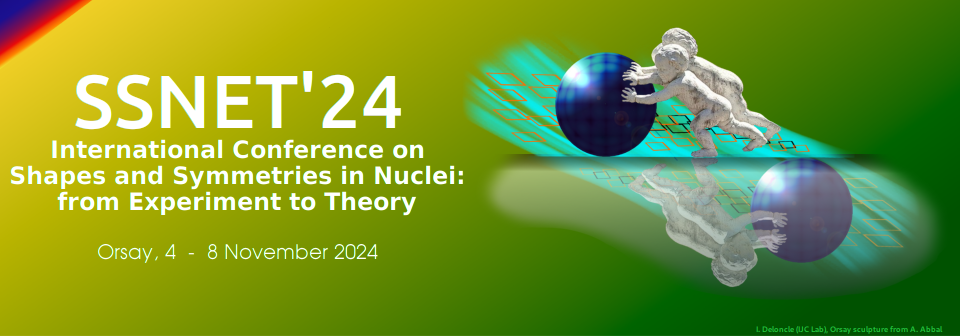Orateur
Description
In the last decade, a considerable progress in the understanding of the structure of nuclei in the vicinity of $^{132}$Sn, the heaviest doubly-magic nucleus far-off stability accessible for experimental studies, was achieved. The many results obtained in several experimental campaigns performed at the Radioactive Isotope Beam Facility (RIBF) in Japan, in combination with state-of-the-art theoretical investigations, contributed in a significant way to this progress [1-4]. In the present contribution, new results from an experiment dedicated to decay spectroscopy in the $^{132}$Sn region performed during the EURICA campaign in 2014 will be discussed [5]. In particular, the known I$^\pi$ = 8$_1^+$, E$_x$ = 2129-keV isomer in the semi-magic nucleus $^{130}$Cd$_{82}$ was populated in the projectile fission of a $^{238}$U beam and the high counting statistics of the accumulated data allowed to determine the excitation energy, E$_x$ = 2001.2(7) keV, and half-life, T$_{1/2}$ = 57(3) ns, of the I$^\pi$ = 6$_1^+$ state based on $\gamma\gamma$ coincidence information. The new experimental results, combined with available data for $^{134}$Sn and large-scale shell model calculations, allowed to extract proton and neutron effective charges for $^{132}$Sn, a doubly-magic nucleus far-off stability. A comparison to analogous data for $^{100}$Sn provided first reliable information regarding the isospin dependence of the isoscalar and isovector effective charges in heavy nuclei.
[1] J. Taprogge et al., Phys. Rev. Lett. 112, 132501 (2014)
[2] G.S. Simpson et al., Phys. Rev. Lett. 113, 132502 (2014)
[3] V. Vaquero et al., Phys. Rev. Lett. 118, 202502 (2017)
[4] V. Vaquero et al., Phys. Rev. Lett. 124, 022501 (2020)
[5] A. Jungclaus et al., Phys. Rev. Lett. 132, 222501 (2024)

